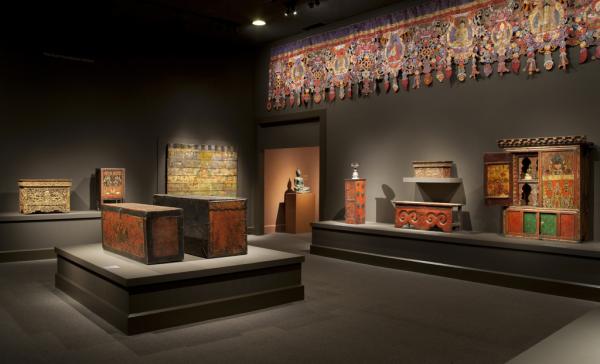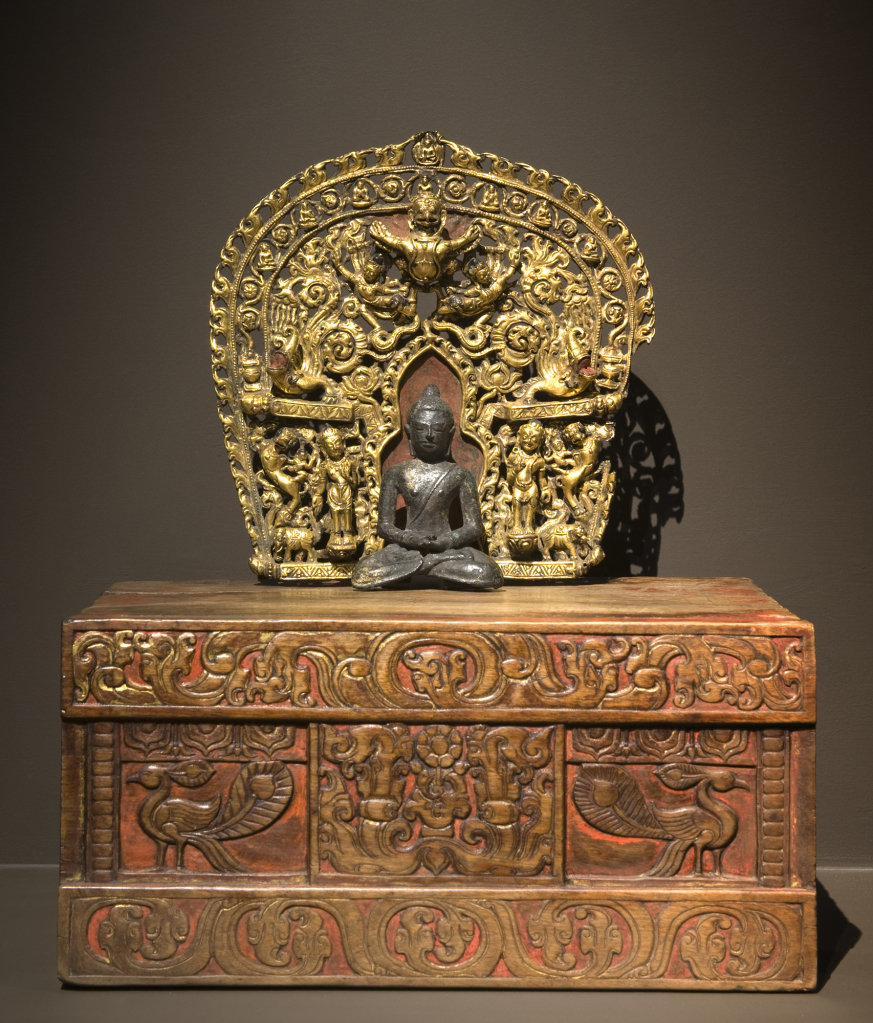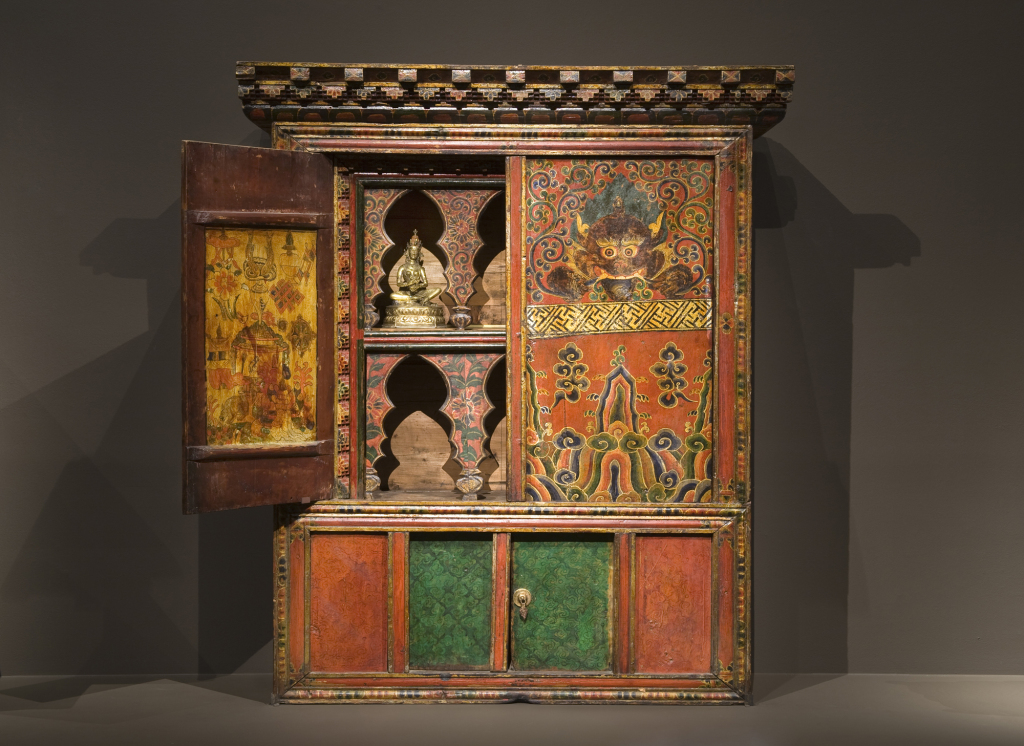Tibet still harbors some portion of Shangri La in the imagination, sitting as it does in the high plateau north of the Himalayas where the peaks of its sacred, snowy mounts dissolve into the mist above. The land’s sheer vastness and grandeur form the backdrop to the amazing collection found in the exhibition In the Service of the Buddha: Tibetan Furniture from the Hayward Family Collection. Chests and tables, cabinets and bookstands, trunks and offering tables—bright and jewel-like in the softly lit, ashen brown, tent-like space of the gallery.
Installation view, In the Service of the Buddha: Tibetan Furniture from the Hayward Family Collection, Photo © LACMA/Museum Associates
Tibet is a world of extraordinary diversity and beauty where great rippling sand dunes are edged by giant green forest, extended treeless plains of feather and quack grass where nomadic tribes live in black yak-wool tents. And then there are the flattop stone dwellings covered in multi-colored pray flags and their monasteries dotted throughout the land, all in the worship of the Buddha.
Installation view, In the Service of the Buddha: Tibetan Furniture from the Hayward Family Collection, Photo © LACMA/Museum Associates
Installation view, In the Service of the Buddha: Tibetan Furniture from the Hayward Family Collection, Photo © LACMA/Museum Associates
Acquired last year, the Hayward Collection covers 1,100 years, from the ninth to the twentieth century, of Buddhist life and worship. Each piece speaks to its genealogy, whether from a monastery, a merchant, or a fold-up piece made for a nomad. This is charmed furniture of exquisite craftsmanship; strikingly, the wooden furniture with its individual images in gold cartouches of auspicious deities, snow lions, dragons and phoenixes, and ritual tantric offerings that protect the contents or bring luck, have a certain humble appeal that the metal sculptures of the same origin don’t achieve. Even the marvelous thangkas, with their sometime inscrutable intricacy, can put the viewer at a distance. But the wood is familiar, and the tactile nature of the objects are known entities, merely made to hold something precious. The wood’s uneven and lived-in surface, its gorged and pitted grain, its visible rivulets mark its time in that service. But in their new, other life as luminous art objects, the furniture crosses cultural borders and addresses its beauty to us.






